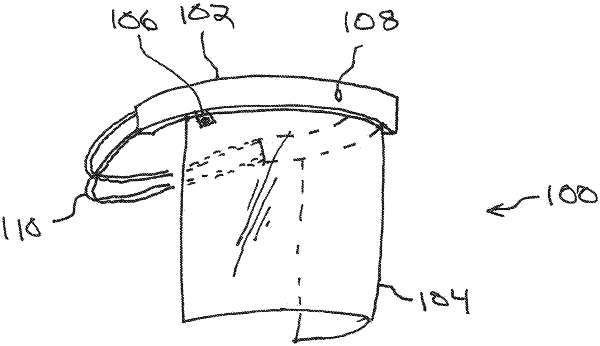| CPC G16H 10/60 (2018.01) [G06T 3/40 (2013.01); G06V 40/1365 (2022.01); G06V 40/172 (2022.01); G10L 15/22 (2013.01); G16H 20/10 (2018.01); G16H 40/63 (2018.01); H04B 1/385 (2013.01); G10L 2015/223 (2013.01); H04B 2001/3866 (2013.01)] | 13 Claims |

|
1. A healthcare worker smart visor, comprising:
a radio transceiver;
a non-transitory memory;
a camera;
a processor communicatively coupled to the radio transceiver, the non-transitory memory, and the camera;
an optical visor;
a head-up display (HUD) projector that is communicatively coupled to the processor and that is operable to project an image on an inside surface of the optical visor;
a headband retaining the radio transceiver, the non-transitory memory, the camera, the processor, the optical visor, and the HUD projector; and
a smart visor application stored in the non-transitory memory that, when executed by the processor:
transmits a digital image captured by the camera via the radio transceiver to a facial recognition server application that executes on a computer system,
receives an identity of a patient via the radio transceiver in response to transmitting the digital image captured by the camera,
transmits a request for patient information via the radio transceiver to a patient information server application executing on a computer system, wherein the request comprises the identity of the patient associated with the digital image,
receives patient information via the radio transceiver in response to transmitting the request for patient information,
presents at least some of the patient information on the inside surface of the optical visor via the HUD projector,
receives patient body metrics via the radio transceiver from sensors associated with the patient,
presents at least some of the body metrics on the inside surface of the optical visor, whereby a healthcare worker positively identifies the patient and provides healthcare to the patient according to an authorized treatment regime,
receives a voice prompt from the healthcare worker wearing the healthcare worker smart visor requesting information on interactions with a specific drug, and
presents information about interactions with the specific drug on the inside surface of the optical visor via the head-up display projector,
wherein the HUD projector is configured to:
receive information from the camera about an environment in front of the healthcare worker smart visor; and
adapt the presentation of the at least some of the patient information to not obstruct a view of an object in the environment in front of the healthcare worker smart visor with the at least some of the patient information.
|